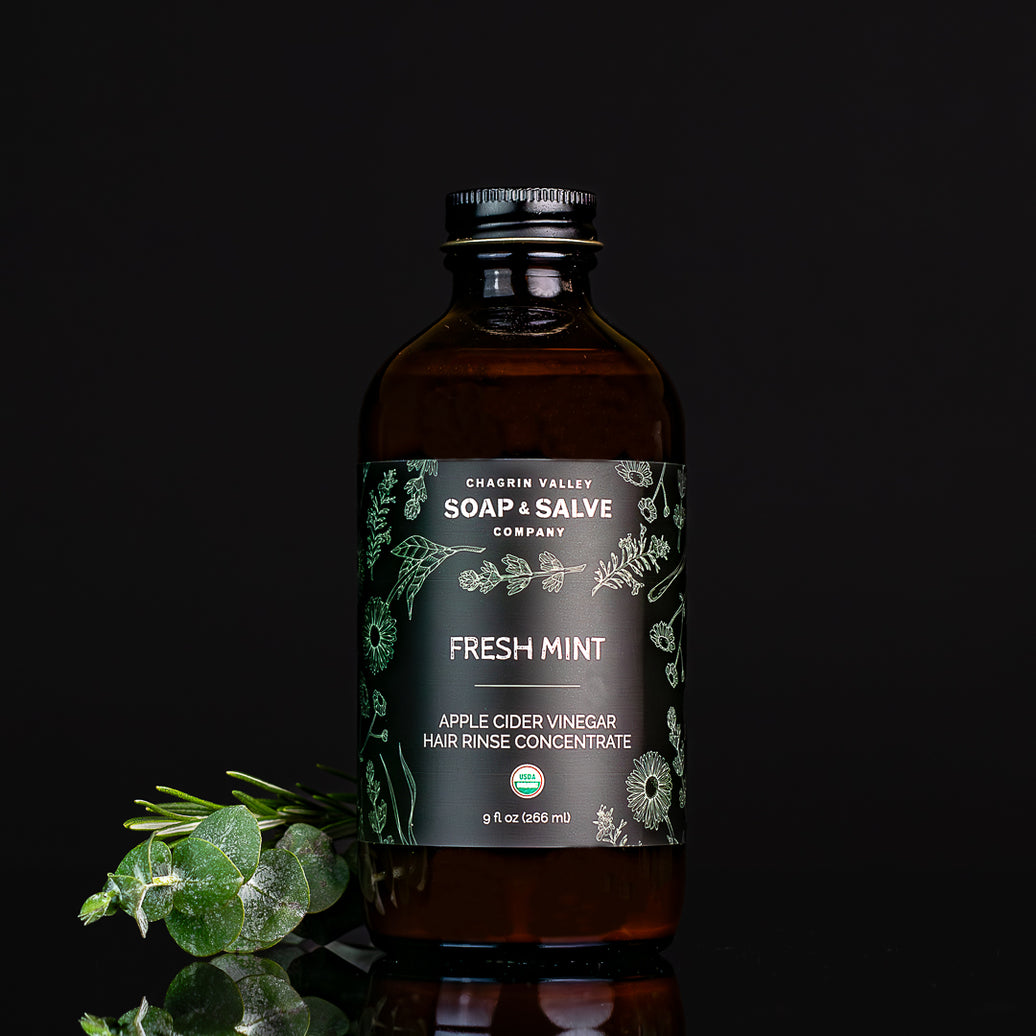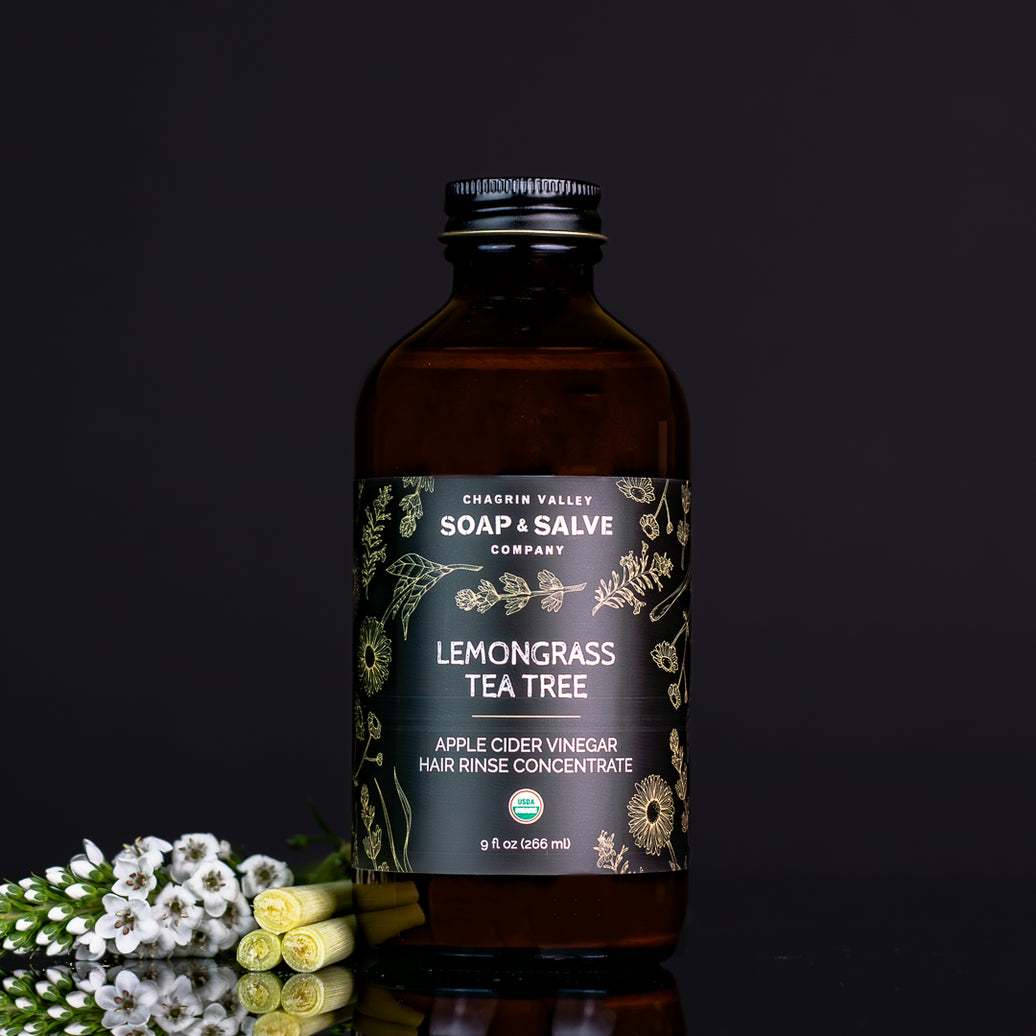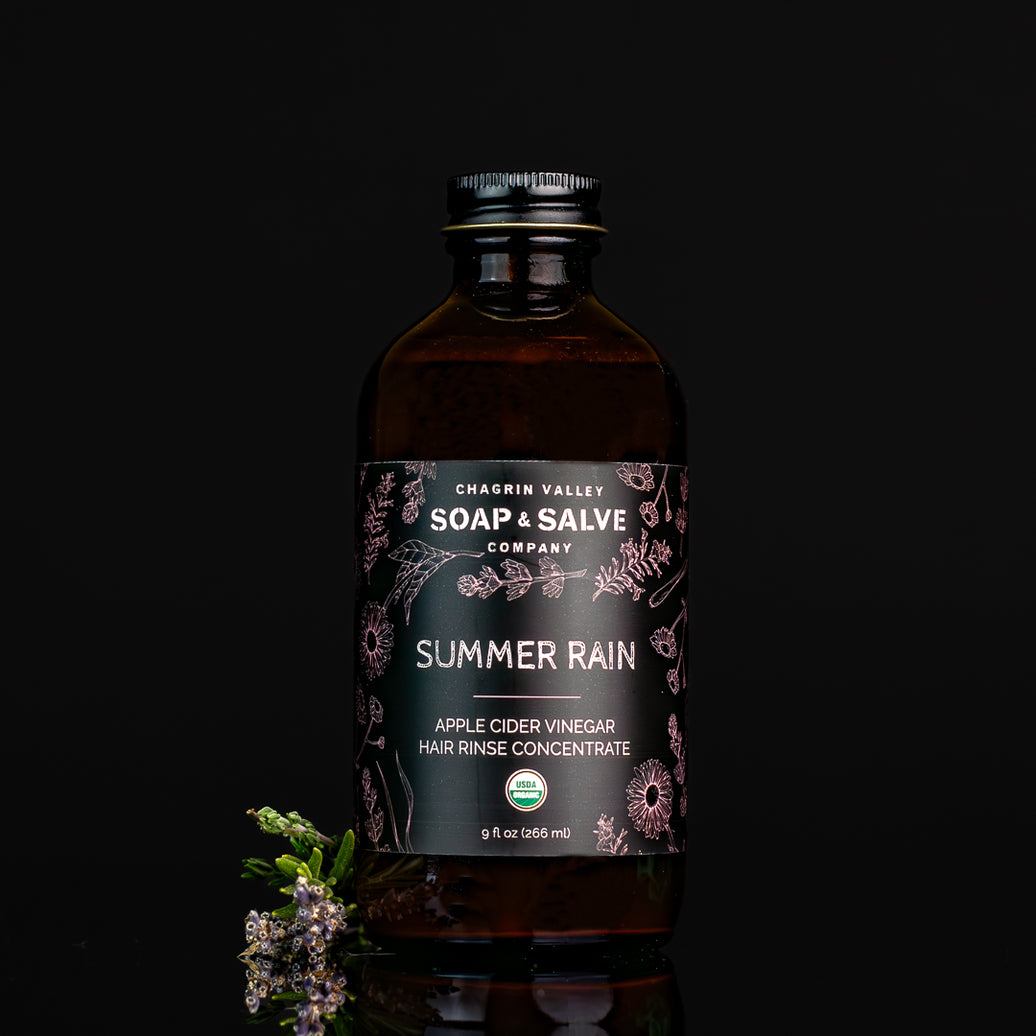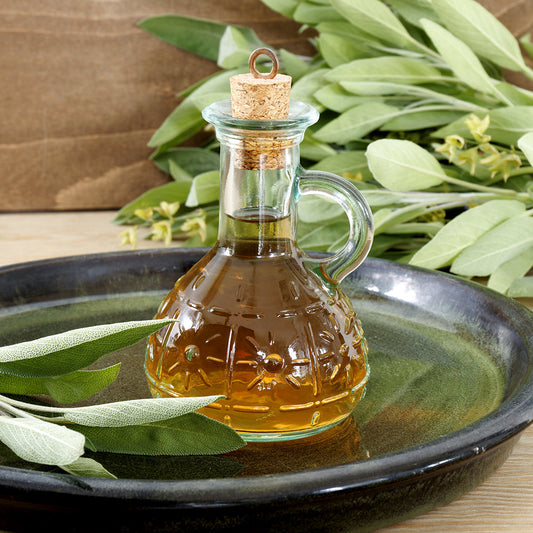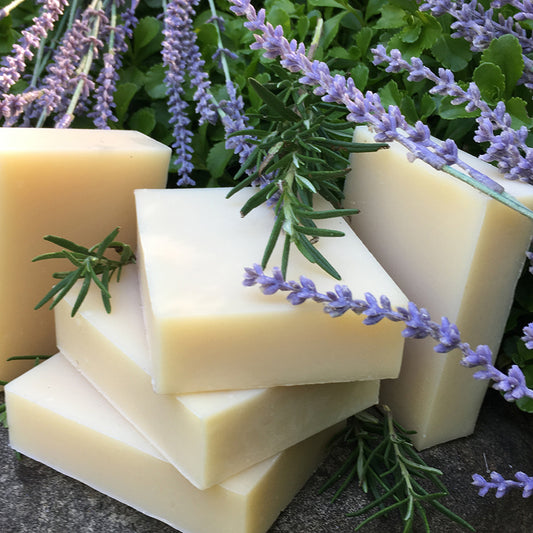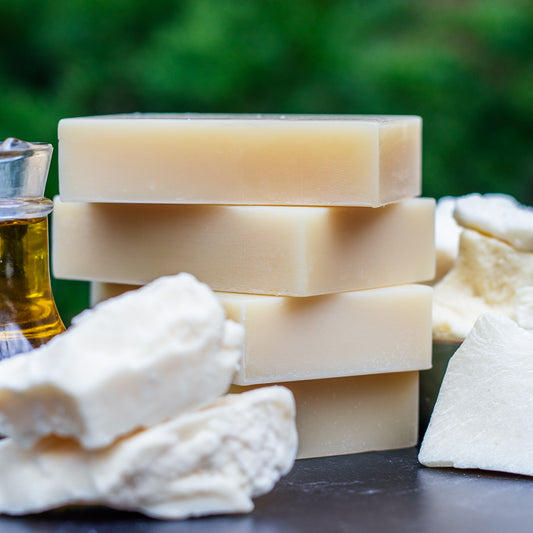Apple Cider Vinegar Hair Rinse Benefits & How to Use Them
An apple cider vinegar-based rinse can help restore life to your hair and scalp no matter what type of shampoo products you use.
Raw apple cider vinegar (ACV), packed with nutrients, can help with tangles and frizzy hair, bring back body and shine, decrease residue and clarify, stimulate the scalp, decrease dandruff, and unclog hair follicles which may help with excess shedding or hair loss.
A Chagrin Valley Organic Apple Cider Vinegar Hair Rinse is a great addition to any hair care regimen.
How An Apple Cider Vinegar (ACV) Rinse Can Help Hair
 Detangle and Reduce Frizz: The outer layer of hair, the cuticle, covers the hair shaft and protects it like the bark on a tree. The cuticle is made of overlapping layers of long scales that lie along the surface of the hair like shingles on a roof. It is the condition of the cuticle scales that determines whether you are going to have a bad hair day.
Detangle and Reduce Frizz: The outer layer of hair, the cuticle, covers the hair shaft and protects it like the bark on a tree. The cuticle is made of overlapping layers of long scales that lie along the surface of the hair like shingles on a roof. It is the condition of the cuticle scales that determines whether you are going to have a bad hair day.
- ACV helps smooth the cuticle which allows knots and tangles to comb out more easily.
- Frizzy hair is caused by lifted, open cuticles. ACV helps smooth and tighten cuticles to help decrease the frizzies.
Increase Shine: When the cuticle is in good shape, is unbroken, and lies flat, your hair has a smooth appearance. When the layers of the cuticle are tightly knit together, the light is able to reflect off the cuticle. This is what makes hair shine! The cuticle opens when we shampoo our hair. When the cuticle layers are open and not knit together, the hair will feel rough, coarse, and brittle. The hair will absorb the light rather than reflect it, which gives the appearance of dull and lifeless hair.
Decrease Residue and Build Up: ACV removes scaly build-up and residue from hair shafts to cleanse and clarify the hair and scalp without stripping the hair of its natural oils. Since residue coats hair causing it to look dull, removing residue also gives hair more shine. Also, as residue builds up on the scalp it can clog hair follicles preventing them from receiving oxygen and nutrients, which can lead to or exacerbate scalp issues and encourage hair loss.
Reduce Shedding: Apple cider vinegar can be used to gently cleanse the hair and remove product buildup without using harsh hair care products that can increase shedding. It can also help decrease residue, clarify and stimulate the scalp, remove dead skin cells, and unclog hair follicles. This promotes a healthy scalp and allows the scalp to breathe which may help with excess shedding or hair loss.
Add Body, Bounce and Define Natural Curls: Unlike conventional conditioners, vinegar does not weigh down the individual hair strands which can cause hair to feel heavy and look limp--this is especially true for folks with fine hair. Also, by taming the frizz and removing residue, vinegar rinses help add body and bounce to all hair types and renew the bounce to naturally curly hair.
Stimulate The Scalp: Vinegar has a tonic action that promotes blood circulation in the small capillaries that irrigate the scalp with essential nutrients. This helps encourage hair growth and strengthen roots.
Decrease Dandruff and Flaking: ACV has natural antibacterial and antifungal properties that help treat and calm a dry itchy scalp by killing the bacteria and fungus that may be associated with dandruff (and even hair loss) and other scalp conditions, without harsh chemicals.
How To Use Vinegar Rinses
Simple Vinegar Rinse Recipe
 Plain vinegar is very strong and can be very drying to hair, so remember to dilute our concentrated apple cider vinegar rinse.
Plain vinegar is very strong and can be very drying to hair, so remember to dilute our concentrated apple cider vinegar rinse.
-
NEVER use undiluted ACV on your hair. It can irritate your scalp and damage hair.
- Recipes generally advise mixing 1/2 to 4 tablespoons of apple cider vinegar (ACV) with 8 ounces (1 cup) of water.
**You may need to experiment to find a dilution that works best for your hair type (dry scalp likes less ACV and oily scalp likes more). I suggest you begin with 1/2 tablespoon of ACV to 8 ounces of water in order to judge how your hair and scalp will feel. I find that using 4 tablespoons (1/4 cup) ACV to 8 ounces (1 cup) of water is too concentrated for most.
- Place the diluted ACV in a plastic squeeze bottle, spray bottle, or another container
Check out our 16-ounce reusable squeeze bottles.
We infuse our organic apple cider vinegar rinses with certified organic herbs and organic essential oils that are great for the hair and scalp. See the recipes at the bottom of the page for more creative ideas.
How Do I Apply The Vinegar Hair Rinse?
 After shampooing, pour, squirt or spray the rinse onto wet hair. Massage into hair and scalp and pay special attention to the ends. Let it sit for a couple of minutes.
After shampooing, pour, squirt or spray the rinse onto wet hair. Massage into hair and scalp and pay special attention to the ends. Let it sit for a couple of minutes.
Now you have a few choices. You may rinse it all out if you want, or leave the rinse on your hair.
When I squirt the ACV rinse onto my hair while in the shower, I rinse a little--one quick spray of water.
When I mix the rinse into a spray bottle, I apply after my shower and do not rinse. Leaving the vinegar rinse on your hair helps prevent tangles in long hair.
As your hair is drying you will smell vinegar, but once your hair dries, no smell. I was skeptical at first--but this really works!
How Often Can I Use an Apple Cider Vinegar Hair Rinse?
Since everyone's hair is unique you should use your own judgment on this. You will need to experiment to find a dilution that works best for your hair type. Remember--dry hair likes less vinegar and oily hair likes more.
Some say that vinegar rinses may be drying if used every day and it is best to restrict use to two times per week. I used a vinegar rinse every other day for the first few weeks when I switched to natural shampoo bars--until my hair adjusted to the new shampoo--now once or twice a month keeps my hair healthy and shiny. Many customers have found this regimen to work, but do some experimenting!
Do I Still Need To Use Conditioner?
There is no "yes or no" answer to this question. I have long, very thin hair and have found that after using our vinegar rinse my hair is tangle-free and after drying it has more body and shine than when I used conditioner. So I would say that you do not need a conditioner.
But you must experiment. If you normally need conditioner and you discover that the lack of conditioner affects the appearance of your hair, I would suggest applying conditioner sparingly to the ends of your hair.
Are Vinegar Rinses Safe For Color Treated Hair?
The information concerning the effect of vinegar rinses on color-treated hair runs the gamut from one extreme to the other. On one hand, some folks say that the acidic pH of vinegar will strip some color from color-treated hair.
On the other extreme some believe that since vinegar seals the hair cuticle, it will actually help prevent color from fading. Still, others add that a dilute vinegar rinse, once or twice a month, will freshen highlights and enhance shine as it removes residue that has accumulated on the hair shaft.
If you are unsure I suggest doing a "strand test" on hair that is hidden when you style your hair.
An ACV Rinse Can Help With Dandruff
What some folks call "dandruff" is simply a scalp condition in which there are excess flakes of dead skin that appear in the hair. This can be caused by dry skin, oily skin, or too much or too little hair washing.
 For other folks, the "dandruff" is caused by an irritated skin condition called seborrheic dermatitis. This condition is marked by red, greasy skin and scalp covered with flaky white or yellow scales.
For other folks, the "dandruff" is caused by an irritated skin condition called seborrheic dermatitis. This condition is marked by red, greasy skin and scalp covered with flaky white or yellow scales.
Researchers now believe that severe dandruff may be caused by a yeast-like fungus called Malassezia globosa. While this fungus normally lives on the scalps of most adults, it can be an irritant for some. This irritation causes excess skin cells to grow on the scalp. These cells die and fall off as white flakes.
A stronger ACV rinse may help with fungal dandruff. Apple cider vinegar has natural antifungal properties to help prevent and alleviate dandruff. Mix together equal parts apple cider vinegar and water and massage into your scalp before shampooing.
An ACV rinse may also help with seborrheic dermatitis. Since ACV can sting the sensitive skin irritated by seborrheic dermatitis, start slowly.
- Begin with a dilute ACV rinse using 1/2 to 1 tablespoon of ACV to 10 ounces of water.
- Allow the mixture to sit on the scalp for a few minutes and rinse.
- If it seems to help, you can slowly increase the concentration.
ACV may also help with patches of seborrheic dermatitis on the skin.
- Dab the diluted vinegar mixture (1/2 to 1 tablespoon of ACV to 10 ounces of water) directly on the affected skin.
- Leave on the skin for a few minutes and rinse.
- If you feel any burning sensation, wash the mixture off, let the skin rest and then you can try an even more dilute mixture.
More Ways To Use Our Organic Vinegar Hair Rinses
Vinegar Rinse With Honey For Dry Hair
Honey is both a natural moisturizer and a natural hair softener. It can also help fight frizz and split ends.
The antimicrobial and antifungal properties of honey can be helpful with dandruff, itchy scalp, and shedding.
Recipe:
- Mix up your normal apple cider vinegar rinse as directed
- Add 1 tablespoon of honey
- Shake very well before use.
Vinegar Rinse With A Bit Of Oil For Dry Hair
 If you have very dry hair adding a bit of oil can help add moisture and conditioning.
If you have very dry hair adding a bit of oil can help add moisture and conditioning.
We have some great organic hair oils you can use with our vinegar rinses or you can add a bit of your favorite hair oil.
Although you will need to experiment to find the right amount of oil to add for your hair type, we have included a basic recipe below.
Recipe:
- Mix up your normal apple cider vinegar rinse as directed
- Add 1/4 to 1 teaspoon of oil
- Shake very well before use
We infuse our organic apple cider vinegar rinses with certified organic herbs and organic essential oils that are great for the hair and scalp.
Share your apple cider vinegar hair rinse ideas!
